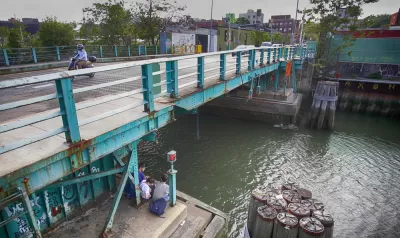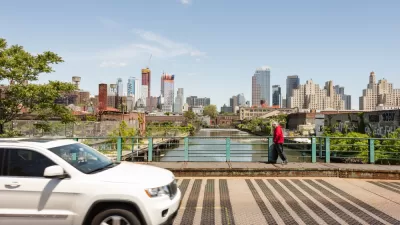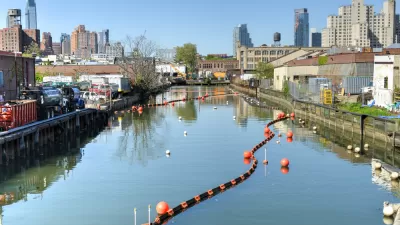The Brooklyn neighborhood of Gowanus was recently added to Mayor de Blasio’s sweeping zoning reform plan. But Gowanus also has plans of its own.

Bridging Gowanus, backed by City Councilmember Brad Lander, is a community planning effort spurred in part by residents’ fears that the rezoning program, meant to make room for more housing, could lead to speculation, rising land prices, and displacement.
The plan proposes a trade-off: Gowanus would absorb more density—in the form of both market-rate and affordable apartments—if some of the profit were directed toward investment in infrastructure as well as protections for current residents. The New York Times writes:
They lay out priorities that neighbors have debated and rallied around — improving streets and parks; protecting lower-income residents and small businesses; addressing environmental resilience. And, of course, making sure growth comes with more and better schools, cultural programs and transit.
The group's website suggests that there is potential for these plans to be adopted by the city:
Starting in the fall of 2016, the community will begin working with the NYC Department of City Planning and other government agencies to develop a planning and land-use framework for the Gowanus neighborhood.
Other neighborhoods are advocating for more protections in the city’s program. A recent report from Regional Plan Association detailed the need for the East Harlem Neighborhood Plan, which has support from City Council Speaker Melissa Mark-Viverito.
Though participating in the mayor's program, NYT writes, these community planning processes also reflect the notion that "zoning should grow out of holistic planning based on participatory governance."
FULL STORY: In Gowanus, a People’s Housing Plan to Challenge the Mayor’s

Alabama: Trump Terminates Settlements for Black Communities Harmed By Raw Sewage
Trump deemed the landmark civil rights agreement “illegal DEI and environmental justice policy.”

Study: Maui’s Plan to Convert Vacation Rentals to Long-Term Housing Could Cause Nearly $1 Billion Economic Loss
The plan would reduce visitor accommodation by 25% resulting in 1,900 jobs lost.

Why Should We Subsidize Public Transportation?
Many public transit agencies face financial stress due to rising costs, declining fare revenue, and declining subsidies. Transit advocates must provide a strong business case for increasing public transit funding.

Paris Bike Boom Leads to Steep Drop in Air Pollution
The French city’s air quality has improved dramatically in the past 20 years, coinciding with a growth in cycling.

Why Housing Costs More to Build in California Than in Texas
Hard costs like labor and materials combined with ‘soft’ costs such as permitting make building in the San Francisco Bay Area almost three times as costly as in Texas cities.

San Diego County Sees a Rise in Urban Coyotes
San Diego County experiences a rise in urban coyotes, as sightings become prevalent throughout its urban neighbourhoods and surrounding areas.
Urban Design for Planners 1: Software Tools
This six-course series explores essential urban design concepts using open source software and equips planners with the tools they need to participate fully in the urban design process.
Planning for Universal Design
Learn the tools for implementing Universal Design in planning regulations.
Smith Gee Studio
Alamo Area Metropolitan Planning Organization
City of Santa Clarita
Institute for Housing and Urban Development Studies (IHS)
City of Grandview
Harvard GSD Executive Education
Toledo-Lucas County Plan Commissions
Salt Lake City
NYU Wagner Graduate School of Public Service




























